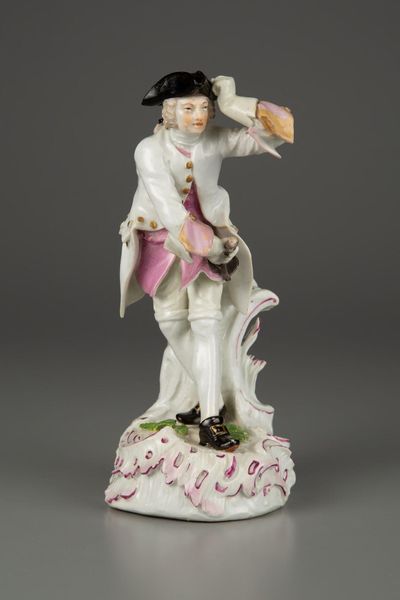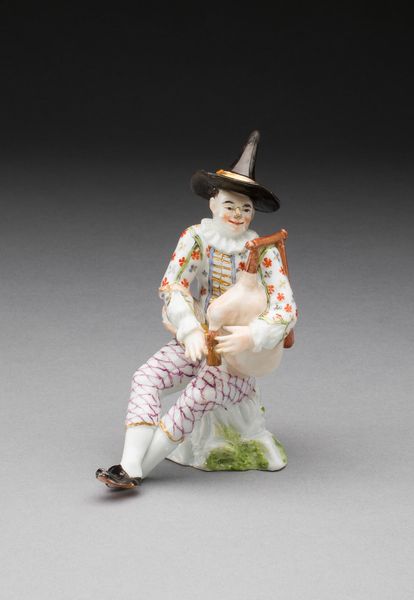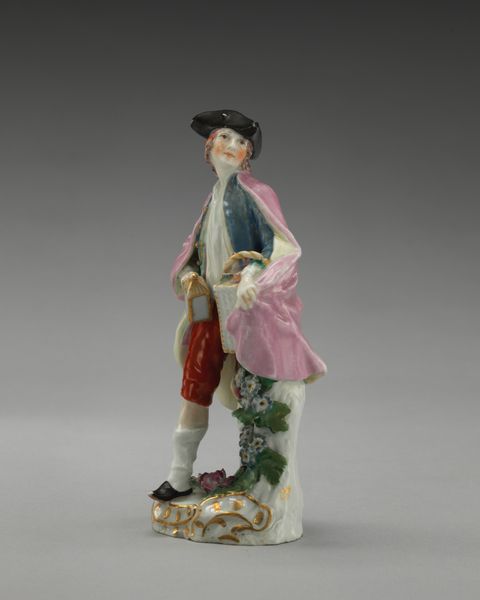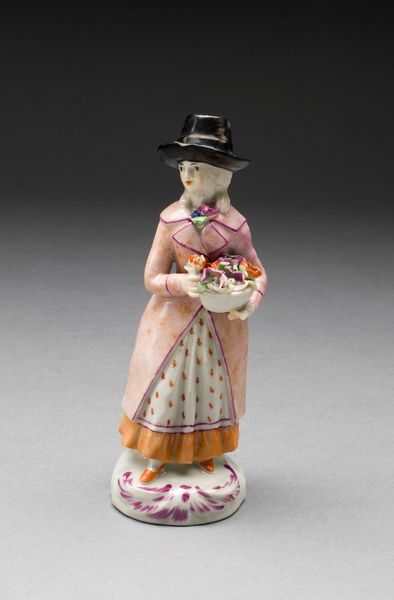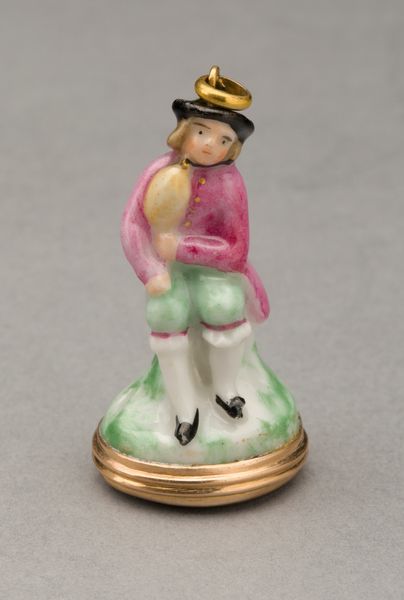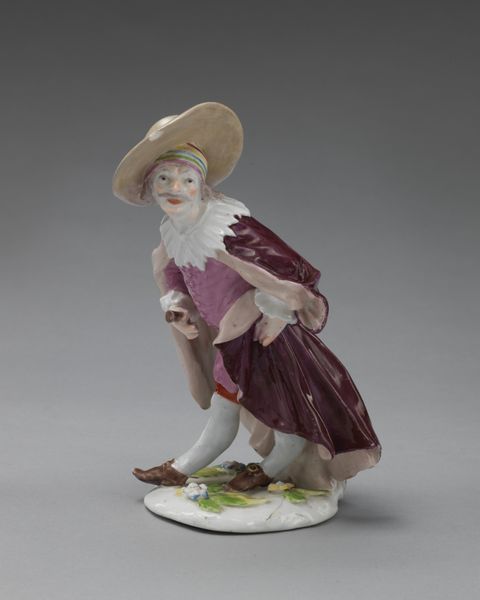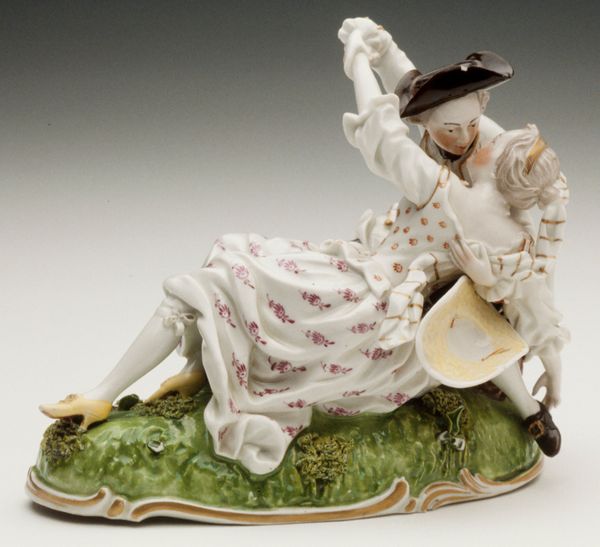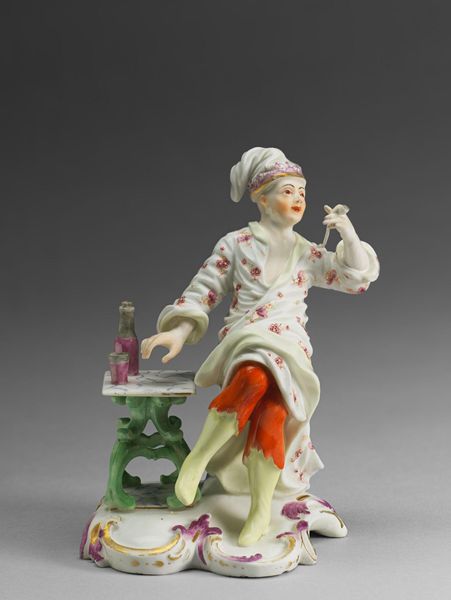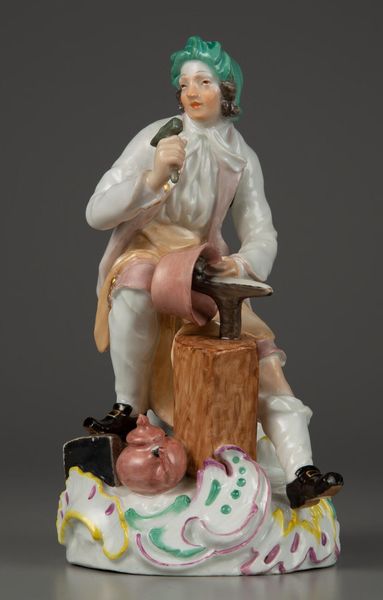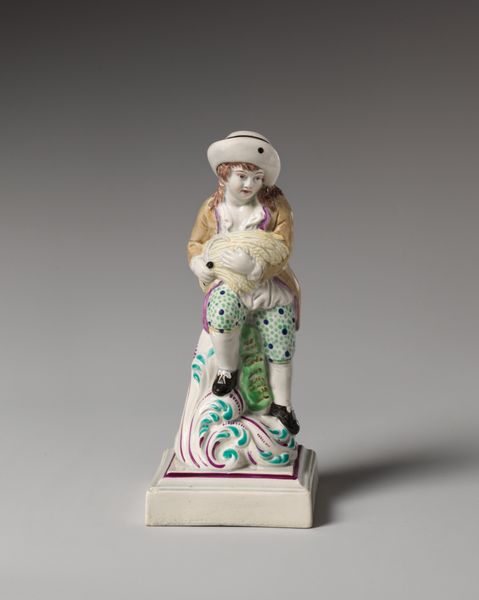
Dimensions: 13.8 × 5.3 cm (5 7/16 × 2 1/4 in.)
Copyright: Public Domain
This is a porcelain figure of a man with grapes, made at the Limbach Porcelain Factory sometime between 1772 and 1944. The figure is made of a fine, white clay called porcelain. It would have been cast in a mold, then fired at a high temperature to make it hard and durable. The details, like the man’s pink coat and hat, and the grapes in his basket, would have been painted by hand, requiring great skill. Porcelain figures like this were often made in factories, where workers specialized in different parts of the process. Some workers cast the clay, others fired the pieces, and still others painted the details. These figures were luxury items, intended for display in wealthy homes. They represent a shift in production from the individual artisan, to a larger factory setting, part of the rise of consumer culture. Considered in this light, the figure is not just a pretty object, but also a record of social change, and the division of labor. It prompts us to think about the people who made it, and the society in which they lived, blurring the lines between art, craft, and social history.
Comments
No comments
Be the first to comment and join the conversation on the ultimate creative platform.
